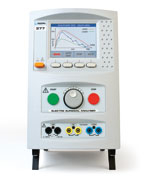The need to improve hospital hygiene to reduce transmission of nosocomial pathogens
Recent studies have demonstrated that several major nosocomial pathogens are shed by patients and contaminate hospital surfaces at concentrations sufficient for transmission, survive for extended periods, persist despite attempts to disinfect or remove them, and can be transferred to the hands of healthcare workers. Evidence is accumulating that contaminated surfaces make an important contribution to the epidemic and endemic transmission of Clostridium difficile, vancomycin-resistant enterococci, MRSA, Acinetobacter baumannii, Pseudomonas aeruginosa and norovirus, and that improved environmental decontamination contributes to the control of outbreaks.
by Dr Jonathan A. Otter
Hospital patients shed pathogens into their surrounding environments but there is debate over the importance of the resulting surface contamination as a source for subsequent transmission. Several studies in the early 1980s suggested that the hospital environment contributed negligibly to endemic transmission. Recently, however, there has been a reassessment of the role of contaminated surfaces in the transmission of nosocomial pathogens.
Pathogen transfer from an affected patient to a susceptible host occurs most commonly via the hands of healthcare workers (HCWs) but contaminated objects, surfaces and air can be either directly or indirectly involved in transmission [Figure 1]. Here we review evidence that nosocomial pathogens are shed by patients and can contaminate hospital surfaces at concentrations sufficient for transmission, can survive for extended periods, can persist despite attempts to disinfect or remove them and can be transferred to the hands of healthcare workers (HCWs) [1]. We also review evidence that improved environmental hygiene can help to bring outbreaks under control and reduce endemic nosocomial transmission.
Pathogens are shed into the hospital environment
Several important pathogens including Clostridium difficile, methicillin-resistant Staphylococcus aureus (MRSA), vancomycin-resistant enterococci (VRE), Acinetobacter baumannii and norovirus can be shed by patients into the hospital environment and share the ability to survive on dry surfaces for extended periods. Under certain conditions, C. difficile spores, VRE, MRSA and Acinetobacter spp. can survive for 4-5 months or more on dry surfaces and norovirus can survive for a week or more [2]. Wide variation in the reported frequency of environmental contamination can be explained by several factors, including the degree of shedding by the patient, the culturability of the organism, the sampling methodology and the ease of contamination (or difficulty of cleaning) of the particular environment. Methodological differences in sample collection and culture make comparisons between studies difficult and in some cases the true level of environmental contamination may be underestimated.
Patients are the prime source of contamination, so surfaces in the vicinity of patients that are touched frequently by healthcare workers and patients, termed


